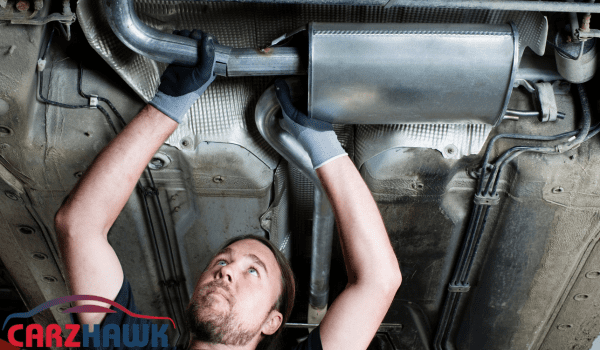Modern vehicles are equipped with a variety of intricate components, such as computer modules, sensors, switches, and various electrical parts. This also encompasses the emissions system. An onboard diagnostics system called OBDII keeps a close eye on your vehicle’s performance and alerts you whenever any concerns require your attention. One of the tasks it carries out is running tests to ensure the proper functioning of your emissions system. In the event of any issues, it promptly activates a warning light.
Some vehicles feature a ‘Check Emission System’ light on the dashboard. While others have a Check Engine Light or a different indicator. Ignoring these warnings could lead to costly repairs, such as replacing a catalytic converter, which could set you back several hundred dollars. However, some issues can be resolved without any cost, such as simply tightening the fuel cap. Understanding these implications can motivate you to prioritize maintenance and avoid expensive repairs.
As a responsible vehicle owner, it’s crucial to grasp the significance of the Check Emission System warning light. This understanding empowers you to take immediate action, addressing the issue promptly and preventing potential problems that could affect your vehicle’s performance.
What Does The “Check Emission System” Warning Light Indicate?
The emission control system releases the emission of harmful gases and pollutants from the vehicle’s exhaust system. When the Check Emission System warning light illuminates a car, it clearly indicates that the system is in trouble.
When the Check Emission System warning light comes on, it typically means there is a problem with one of the system’s components or an external factor is causing emissions to exceed normal levels. It’s crucial to deal with the problem right away because a faulty emission control system can result in higher exhaust emissions. This not only poses a risk to the environment but can also cause the vehicle to fail a smog check.
Rest assured, there are resources available to help you address the ‘Check Emission System’ warning light. Using a diagnostic scan tool can pinpoint the exact problem, allowing a skilled mechanic to efficiently make the required repairs. Alternatively, if you have the skills, you can handle the problem on your own. This accessibility to tools and resources should give you confidence in managing your vehicle’s emission control system.
Possible Reasons for the “Check Emission System” Warning Light
Similar to other warning lights, various issues can cause it to light up. It’s necessary to conduct a more comprehensive inspection to determine the source of the issue, whether it’s one of these commonly replaced parts or a less frequently encountered component. Here are a few possible reasons:
- Faulty oxygen sensor
- The issue with the catalytic converter
- A potential issue could be a gas cap that is loose or damaged.
- Malfunctioning hose
- Malfunctioning ignition coils or spark plugs
- Faulty, rusted, or impaired wiring or connections
- Malfunctioning airflow sensor
- Worn-out or damaged engine components, such as valves or pistons, may need to be replaced.
- Faulty EGR valve
- There is an issue with the EVAP canister or solenoid.
- Air filter obstruction
- Faulty or impaired exhaust pipe
- A potential issue that could arise is a malfunctioning or worn-out fuel injector.
Identifying The Problem
When the Check Emission System warning light appears, it can be a source of concern and frustration. However, identifying the problem can be a straightforward process if you follow a few steps. This clear roadmap can help you navigate the situation with confidence and efficiency.
First, make sure to inspect the gas cap, as a loose or damaged cap may be the culprit behind the warning light. Based on the system’s analysis, there is a significant vacuum leak in the fuel system, which is quite problematic. If the gas cap is secure and undamaged, a diagnostic tool can be utilized to pinpoint the exact issue within the emission control system. You can find these tools for sale or check with your nearby AutoZone to see if they participate in the Loan-a-Tool program.
Next, carefully examine all the various parts of the emission system. Certain components, such as the oxygen sensor, catalytic converter, and evaporative emission system, should be inspected for any visible damage or signs of malfunction. Additionally, the wiring should be inspected for any indications of corrosion or loose connections.
If the diagnostic tool doesn’t detect any specific issues or if you’re uncertain about what to look for, it might be a good idea to bring your vehicle to a certified mechanic. They have access to state-of-the-art diagnostic tools and possess the necessary knowledge and expertise to diagnose and repair your emission system accurately.
Addressing The Problem
If you’ve pinpointed the problem triggering the Check Emission System warning light, it’s time to take action and resolve it. If there’s an issue, you might need to consider replacing certain parts, such as the oxygen sensor, catalytic converter, or vacuum hose.
Repairing or replacing leaking connections or damaged wiring can help ensure that the emission control system is functioning properly. Occasionally, resolving the warning light issue can be as straightforward as swapping out the gas cap or giving it a good tightening.
Once the necessary repairs have been completed, you can easily clear the warning light by using a scan tool or by disconnecting the battery for a few minutes. It’s important to note that just getting rid of the warning light won’t solve the real problem, so make sure to tackle the underlying issue first.
Maintaining Your Vehicle
By following some simple practices, you can prevent the Check Emission System warning light from appearing. Here are some helpful suggestions to avoid any potential problems:
Regular maintenance is essential- It is important to adhere to the suggested maintenance schedule provided in your car’s owner’s manual. Regular maintenance tasks such as tune-ups, oil changes, and air filter replacements are essential for keeping your emission control system in proper working order.
Opt for premium fuel—Premium fuel can ensure the longevity of your vehicle’s emission control system and promote optimal engine performance.
Make sure to double-check your gas cap. It’s important to ensure that it’s tightly secured after refueling. This will prevent any fuel vapor from escaping and help maintain the proper pressure in your fuel system.
Conclusion
It is critical to understand what a check emission system error on a car means. Failure to properly identify and address the issue may result in users observing a decline in their cars’ performance and an increase in emissions, which is detrimental to the environment.
Take the time to investigate and resolve any issues with your car’s emissions system. A well-kept emissions system can help cut down on dangerous pollutants in the air and save money on gas.





